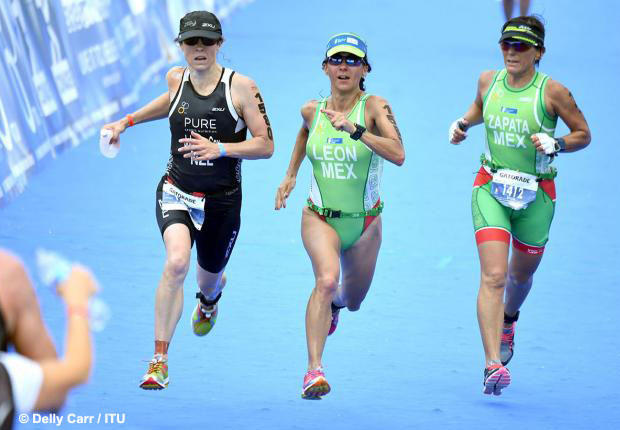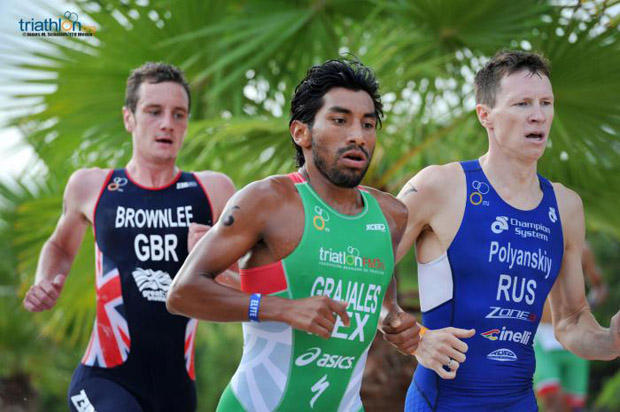That Clen Pop in Cozumel
Last week web stories about a British athlete testing positive for clenbuterol rose up only to disappear, or be edited, just as quickly. Here is what happened.
"British triathlete tests positive," was the headline in the most widely-read story, which said, "The test revealed the trace of clenbuterol, a growth hormone, in his blood,” and, "the substance is used as a masking agent."
First, what is clenbuterol? It is commonly called a steroid but it isn’t. Nor is it a growth hormone as the lede above stated. I can find no evidence it’s used as a masking agent. It’s a class of drug called a beta-2-agonist. Are you an asthmatic? Do you carry rescue medication? That’s what we’re talking about. Salbutamol, aka albuterol, is a beta-2-agonist.
But your doctor won’t give you a prescription for clenbuterol. As with salbutamol it’s not good to take too much clenbuterol: It is a stimulant, and it’s got “thermogenic” properties, that is, it speeds up your metabolism; your engine burns hotter. Clenbuterol is more thermogenic than your typical asthma inhaler. Because of its thermogenic properties it is used illicitly to shed weight, to lean out, and body builders or those who need to “make weight” are those most likely to use clenbuterol as a PED.

Why is it even made? It’s most often used in veterinary medicine. But even then it’s very often not used for its intended purpose. It’s sold as a fix for respiratory problems in horses, but it’s used as a weight loss drug in cattle, to increase the protein content.
A story appeared in triathlonmagazine.ca announcing a “positive" test in Cozumel, at the ITU Grand Final, held in September of 2016. The article was a recasting of a similar article in the thelawyer.com and it appears the content originally emanated from the house magazine belonging to the British version of what in the U.S. would be a law firm.
According to the ITU’s Erin Greene, "ITU contacted the athlete directly issuing a Notice of a Possible Anti-doping Violation. British Triathlon, UKAD and WADA were all notified simultaneously when the athlete received notice.” She further writes that, “It's my understanding BTF then advised the athlete to seek independent council, which the athlete did.”
Adding this up, here is what could have happened. The athlete sought counsel, hearings were held, the athlete was cleared of wrongdoing, and (my best guess) The athlete’s law firm does what law firms do the world over: It writes a laudatory story about its success. Native advertising, in the new publishing parlance, appears on its own content pages, touting its victory; thelawyer.com picks it up, but the publishing arms of these firms don’t realize how radioactive the subject of PEDs is.
The word “elite” was included in at least the triathlonmagazine.ca and perhaps the other articles as well. This led to speculation that it was Alistair Brownlee because, as we see in related news, he’s “leaving” the ITU for longer distance racing for the next two years. A secret deal?!
Not even close says the British Triathlon Federation (BTF). "The athlete concerned is not a member of British Triathlon’s World Class Performance Programme,” wrote Helen Gorman to me, and this includes both Brownlees and a number of others. Ms. Gorman handles media for the BTF.
I can find no evidence age-group competitors were tested, so, this leaves a shorter list of U23, Junior, relay and Aquathlon athletes who don’t fit in either the age-group nor the WC Performance Programme.
How did the positive test occur in the first place? Who tested the athletes?
This was the ITU’s test. It was the testing authority, and "When ITU is the testing authority, we handle the hearings,” wrote Ms. Greene. "ITU sought the opinion of two laboratories who both agreed that the amount of the substance was consistent with meat contamination,” she wrote, adding that, "All decisions are sent to WADA for acceptance or rejecting, and in this case it was accepted.”
I was reasonably but not entirely satisfied. Are Mexican athletes testing positive for trace amounts of clenbuterol? If they’re all repeatedly clean and then a UK athlete comes over, eats a street taco, and gets popped, that creates a problem with this narrative.
Also, do major national anti-doping agencies treat clenbuterol results management the same way? What is USADA’s posture?
USADA administers the UFC’s anti-doping program. UFC athlete Augusto Montano, of Mexico City, tested positive for trace amounts of clenbuterol as the result of an out-of-competition urine sample he provided on May 19, 2016. USADA concluded that the presence of clenbuterol in the athlete’s sample very likely resulted from clenbuterol contaminated meat consumed in Mexico. USADA’s investigation also took into consideration a negative result for a sample collected after Montano’s positive test. As a result, Montano did not face a period of ineligibility for his positive test.
Li Jingliang, another UFC fighter from Xinjiang, China, was tested one day before Augusto Montano’s test, albeit while in the U.S. for a fight. He also tested positive for trace amounts of clenbuterol and the result was the same: very likely it resulted from clenbuterol contaminated meat consumed in China, so, no sanction.
Another UFC fighter was given a 2-year suspension, by the Canadian Centre for Ethics in Sport. But this Canadian athlete had two significant differences in his case. First, he was Canadian, so unless he was recently traveling in China or Mexico, "positive tests resulting from meat contamination issues are rare outside of those two countries,” according to USADA. Second, this athlete’s clenbuterol had friends; the sample also included metabolites of tamoxifen, boldenone, methandienone and drostanolone.
In 2013 cyclist Madalyn Godby was found to have clenbuterol during an in-competition test oat the Pan American Continental Track Championships in Mexico City. Her results were nullified but "both USADA and the UCI, could not, to a comfortable satisfaction, conclude that Godby had acted negligently or was at fault for the positive test.” So, no further disciplinary action.
USADA confirmed that these are representative of how it handles clenbuterol, reiterating (as it always does) that each athlete is judged, "on a case by case basis, taking into account all the evidence.”
It should be noted, there is and has been a clenbuterol advisory, originally posted in 2011 and updated a month before the Cozumel Grand Final. WADA’s advisory specifically names China and Mexico as countries where inadvertent positives happen. As we see, though, adverse findings continue to emerge, and the UK regrettably did not warn its athletes prior to the Cozumel race.
There is one difference between the incidents above and this one. All the cases cited above were made public, even though in some cases no action was taken. In the Cozumel case discussed here, the athlete remains anonymous. There is obviously room in WADA’s Code for disclosure and confidentiality to differ sport-by-sport. Pro Tour cycling discloses the identity and the adverse finding after the A sample. By my read this behavior is the furthest afield of what is written in The Code, but pro cycling teams and their sponsors like it this way, cycling’s governing body is okay with it, WADA allows or at least doesn’t disallow it, and everyone is happy. On the other side are many or most federation sports where disclosure is not made until all appeals have been exhausted. The athlete does not race during the appeals process. If an athlete is not found to have a positive test (if his adverse analytical finding is covered by a TUE, if his B sample is negative, or if he’s found not guilty of an infraction) his identity is never disclosed. That’s the way triathlon handles it.
“Our actions might have been different,” said the BTF at one point in my discussions with them. The person might have held up his hand and explained what happened, and he he’d learned a valuable lesson. But that instinct was quickly quashed by the reaction to the published stories.




